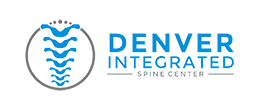With Denver’s car accident rates climbing in recent years, knowing what to do after a car accident is more important than ever. In the immediate aftermath, it’s easy to feel overwhelmed and uncertain about the steps you should take, especially when addressing potential injuries and handling insurance claims.
This blog aims to guide you through the critical steps to take right after an accident, emphasizing the importance of getting treatment for those hidden injuries that may not be immediately apparent. From seeking prompt medical attention to navigating the intricacies of insurance claims and understanding who is responsible for the costs of your care, we’ll provide you with a comprehensive overview to ensure your health and financial well-being are protected.
What To Do Right After a Car Accident
After an accident, seeking medical attention is crucial, even if you don’t feel injured. Some injuries or conditions can take time to become apparent. An immediate medical evaluation will record your health status after the accident. It’s also important to Inform your insurance company about the accident immediately. Most insurance policies have a time limit within which you must report an accident. Failing to report promptly might affect your coverage.
If your doctor recommends treatment or you believe it would be beneficial, schedule a consultation with our providers — you don’t need a referral to see a car accident specialist near you in Denver. Choosing a car accident chiropractor equipped to diagnose common injuries associated with car accidents is important. Keep detailed records of all your visits, treatments received, and any correspondence with your healthcare provider about your treatment plan. This documentation is crucial for your insurance claim.
Depending on the nature of the accident and your insurance policy, you may file a claim with your insurance company (if using MedPay, personal injury protection, or UIM coverage) or the at-fault party’s insurance carrier. Provide all necessary documentation, including the medical report from your initial evaluation, recommendations for care, and any ongoing reports or invoices from your providers. You should follow up with the insurance company since insurance claims can be complex and time-consuming. Stay in contact with your insurance adjuster to monitor the progress of your claim, providing additional information as requested and ensuring that your chiropractic care is covered according to your policy terms.
If you encounter difficulties with your claim, especially in cases where the fault is disputed, or the insurance coverage is insufficient, consulting with a personal injury attorney can be beneficial. An attorney can help navigate the claims process, negotiate with insurance companies, and ensure you receive fair compensation for your injuries and treatment costs.
So, Who Pays for Your Treatment After a Car Accident?
In cases where an accident has occurred, the question of who pays for rehab treatment or any medical treatment can depend on various factors, including the location of the accident (as laws and regulations vary by country and state), the specific circumstances of the accident, and the type of insurance coverage involved. Here are a few general scenarios:
- At-Fault Party’s Insurance: In many jurisdictions, if another party is found to be at fault for an accident (such as in a car collision), their insurance may be responsible for covering medical expenses, including chiropractic care. This is common in “at-fault” states or countries.
- Victim’s Personal Injury Protection (PIP) or MedPay: In “no-fault” states or regions for auto accidents, the victim’s own car insurance may pay for their medical treatment through Personal Injury Protection (PIP) or Medical Payments (MedPay) coverage, regardless of who was at fault. These coverages can help pay for treatment after an accident.
- Victim’s Health Insurance: If the at-fault party’s insurance or the victim’s auto insurance does not cover chiropractic care, or if the accident is not auto-related, the victim’s own health insurance may pay for the treatment. However, this might involve co-pays, deductibles, and certain limitations based on the victim’s health insurance policy.
- Out-of-Pocket Payments: In situations where insurance does not cover chiropractic care, or if there’s a dispute over insurance claims, the victim may need to pay out of pocket initially. They might seek reimbursement through a legal claim against the at-fault party.
What if You Live in Denver?
In Denver, Colorado, whether treatment is paid for after an accident follows the principles of Colorado state law and insurance regulations. Colorado operates under a fault-based (or tort) system for car accidents. This means that the person who is legally at fault for the accident is responsible for the damages, including the medical expenses of those injured. So, if another party is at fault for the accident, their auto insurance should cover your treatment up to the policy’s limits.
Additionally, Colorado law requires that all auto insurance policies issued in the state provide a minimum of $5,000 in Medical Payments (MedPay) coverage, unless the policyholder opts out in writing. MedPay can cover medical expenses, including chiropractic care, physical therapy, massage, and imaging regardless of who is at fault. This coverage is immediate and useful for initial treatment following an accident.
Most Common Chiropractic Therapies After an Accident
After a car accident, chiropractic care can be an effective way to manage pain, promote healing, and restore mobility without the need for invasive surgeries or long-term reliance on medication. Chiropractors use a variety of treatments to address injuries commonly sustained in car accidents. Here are some of the most common chiropractic treatments used for accident victims:
- Spinal Manipulation: Also known as chiropractic adjustment, spinal manipulation is the core treatment chiropractors use. It involves applying controlled force to the spine’s vertebrae that have abnormal movement patterns or fail to function normally. The goal is to restore mobility, alleviate pain and muscle tightness, and allow tissues to heal.
- Decompression & Flexion-Distraction Technique: This is a gentle, non-thrusting type of therapy specifically for herniated discs and spinal stenosis. The chiropractor uses a special table that stretches and decompresses the spine, which can help relieve pain, improve spinal motion, and address disc bulges or herniations.
- Instrument-Assisted Manipulation: This technique uses a hand-held instrument to allow the chiropractor to apply force without thrusting into the spine. It’s particularly useful for older patients with degenerative joint syndrome or anyone who prefers a gentler approach to spinal manipulation.
- Soft Tissue Therapy: To treat muscle tension, chiropractors may use physical therapy such as massage, trigger point therapy, or stretches to relieve muscle tightness and enhance the healing of the soft tissues (muscles, ligaments, tendons).
- Therapeutic Exercises and Stretches: Chiropractors often prescribe specific exercises and stretches to help patients maintain and build on the gains from their chiropractic treatment. These exercises can improve flexibility, strength, and range of motion, and prevent the development of scar tissue following injuries.
- Ultrasound and Electrical Stimulation: Some chiropractors use ultrasound therapy, which involves applying sound waves to the body’s tissues to reduce pain, stiffness, and spasms. Electrical muscle stimulation can also prompt muscles to contract, which can help manage pain and reduce swelling.
Denver’s Car Accident Chiropractor
Navigating the aftermath of a car accident can feel like traversing a complex maze, particularly when it comes to ensuring your physical well-being and managing the financial implications of your care. Understanding the importance of immediate medical evaluation, knowing the right steps for filing insurance claims, and knowing the most effective chiropractic treatments are crucial elements in your post-accident journey. Whether it’s through insurance coverage or understanding your local laws in places like Denver, Colorado, knowing your options for covering the costs of therapy can provide peace of mind during a stressful time.
At Denver Integrated Spine Center, we’re experts at dealing with injuries stemming from car accidents. From tailored chiropractic to physical therapy and rehab, we can help you get back to yourself. Schedule an appointment today to start feeling better tomorrow, or give us a call at (303) 758-9000 to book your slot.

